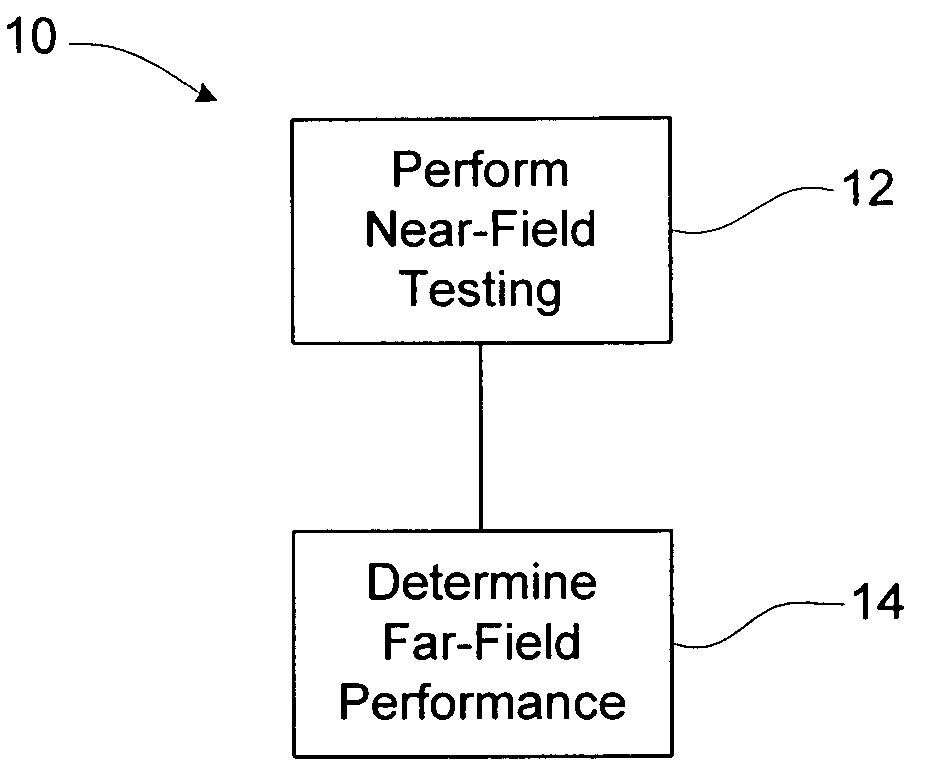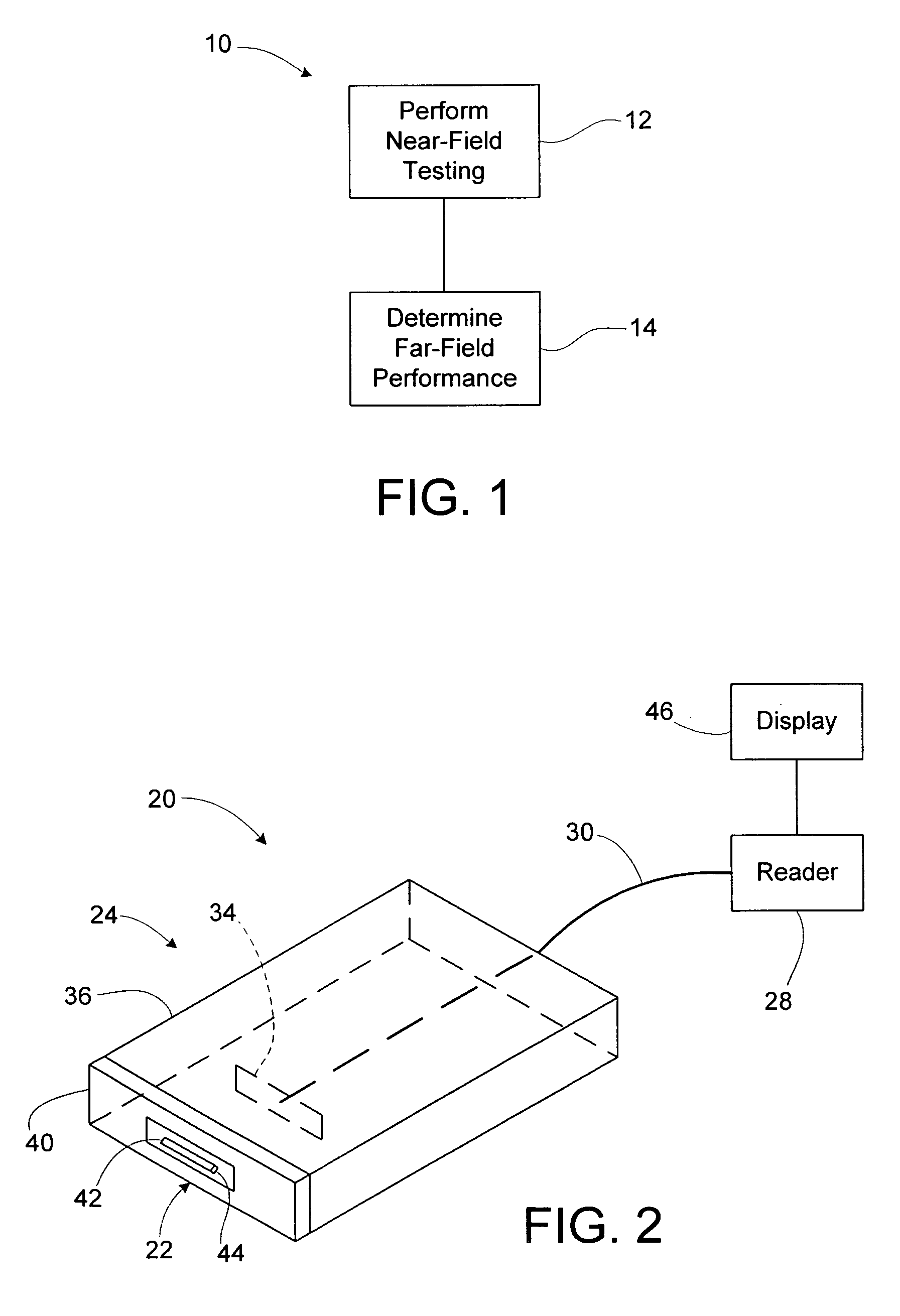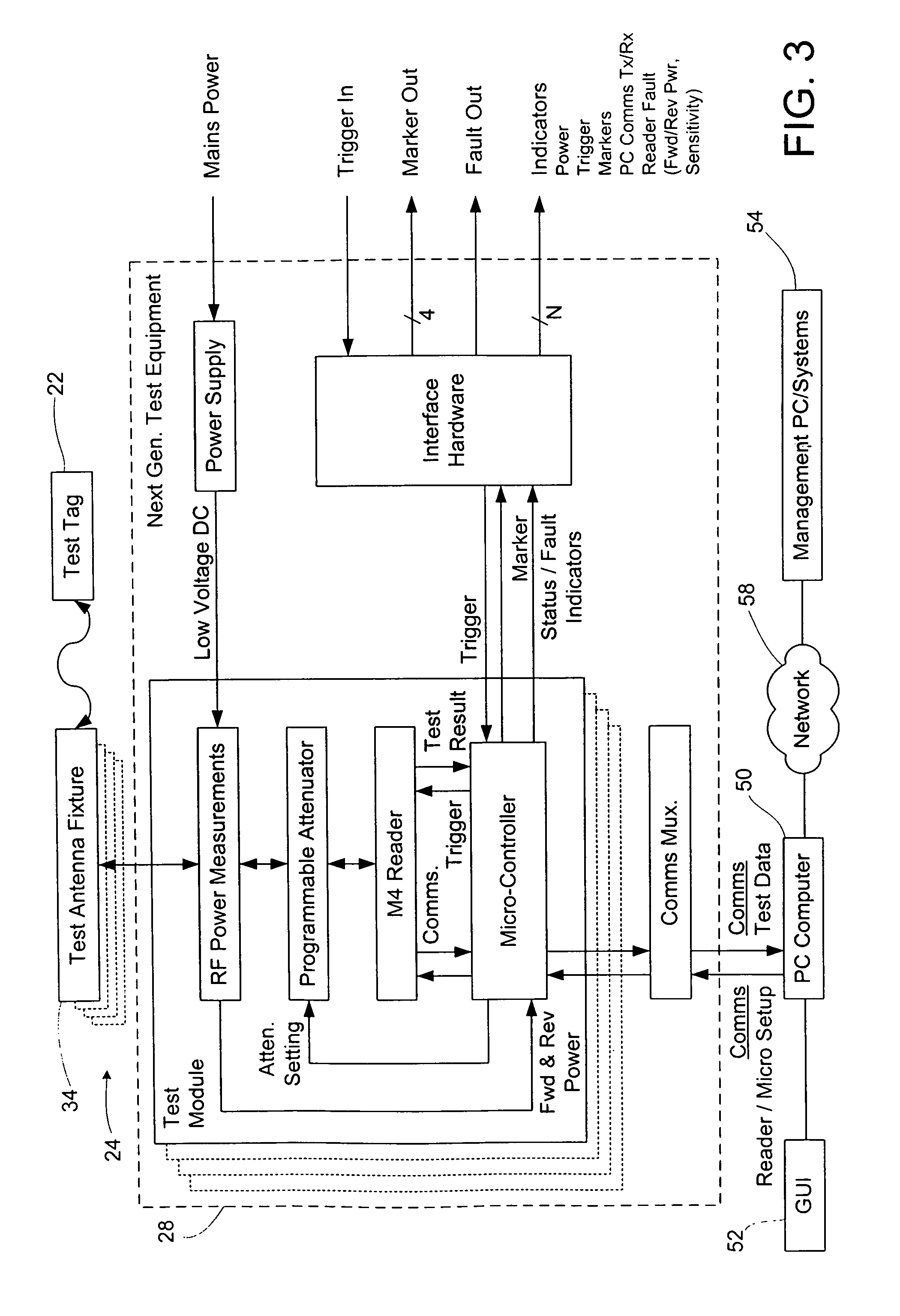Method of determining performance of RFID devices
a technology of radio frequency identification and performance measurement, which is applied in the direction of burglar alarm mechanical actuation, burglar alarm by hand-portable object removal, instruments, etc., can solve the problems of affecting testing, process cannot support a high volume manufacturing environment, and requires a relatively large space for testing
- Summary
- Abstract
- Description
- Claims
- Application Information
AI Technical Summary
Benefits of technology
Problems solved by technology
Method used
Image
Examples
Embodiment Construction
[0019]A method of determining far-field performance of an RFID device, such as in or on a tag, label, package, film, carton, wrap, or a portion of any of these, includes performing near-field testing or measurement of the RFID device, and determining or predicting far-field performance based on the results of the near-field testing or measurement. The determining or predicting of far-field performance may involve calculating a measure of far-field performance based on near-field results or measurements. Alternatively, a prediction of the far-field performance may be obtained from other sources, such as from a look-up table based on prior correlations between near-field test results or measurements, and far-field results. The predicted far-field performance may include any of a variety of performance factors, including range, sensitivity, frequency performance, read sensitivity, write sensitivity, peak operating frequency, and / or average sensitivity over a given frequency band. Using...
PUM
 Login to View More
Login to View More Abstract
Description
Claims
Application Information
 Login to View More
Login to View More - R&D
- Intellectual Property
- Life Sciences
- Materials
- Tech Scout
- Unparalleled Data Quality
- Higher Quality Content
- 60% Fewer Hallucinations
Browse by: Latest US Patents, China's latest patents, Technical Efficacy Thesaurus, Application Domain, Technology Topic, Popular Technical Reports.
© 2025 PatSnap. All rights reserved.Legal|Privacy policy|Modern Slavery Act Transparency Statement|Sitemap|About US| Contact US: help@patsnap.com



